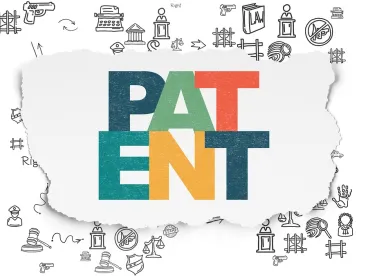The US Court of Appeals for the Federal Circuit explained that diligence towards reduction to practice may be established by a showing of reasonably continuous activity. ATI Techs. ULC v. Iancu, Case Nos. 2016-2222, -2406, -2608, 2019 U.S. App. LEXIS 10704 (Fed. Cir. Apr. 11, 2019) (Newman J).
LG Electronics filed petitions for inter partes review (IPR) of three patents owned by ATI Technologies. In order to antedate certain prior art references cited by LG, ATI alleged that the invention of each of the three challenged patents predated LG’s prior art references under 37 CFR § 1.131 (Rule 131). The Patent Trial and Appeal Board (PTAB) considered ATI’s evidence of conception, reduction to practice and diligence for each patent in separate trials with testimony and argument by both sides. The PTAB found that ATI established conception before the critical date for the cited prior art and that constructive reduction to practice occurred on the filing date of each patent, but held that ATI had not established actual reduction to practice or diligence to constructive reduction to practice. Accordingly, the PTAB invalidated the challenged patents based on the art cited by LG. ATI appealed, and the US Patent and Trademark Office (PTO) intervened after LG withdrew.
For each of the challenged patents, ATI presented the same evidence and substantially the same arguments regarding the date of conception and continuing activity until the patents’ respective effective filing dates. Those dates were not disputed on appeal. The issue on appeal was whether ATI made a sufficient showing of diligence and actual reduction to practice.
PTAB findings of fact are reviewed on appeal for support by substantial evidence, and its conclusions of law are accorded plenary review. The record as a whole is examined, and “the Board’s opinion must explicate its factual conclusions,” enabling the appellate panel to “verify readily whether those conclusions are indeed supported by ‘substantial evidence’ contained within the [closed] record.”
To antedate a prior art reference, Rule 131 requires:
(a) an appropriate oath or declaration to establish invention of the subject matter of the rejected claim prior to the effective date of the reference or activity on which the rejection is based; and
(b) showing of facts of such character and weight to establish
[1] reduction to practice prior to the reference’s effective date, or
[2][i] conception of the invention prior to the reference’s effective date and [ii] due diligence from the period before the effective date to either
[t1] a subsequent reduce to practice, or
[t2] the filing of the application.
Thus, Federal Circuit precedent requires demonstration of either (1) prior reduction to practice or (2) prior conception “coupled with due diligence,” through “documentary support, from which factual findings and inferences are drawn . . .” In re Steed (Fed. Cir. 2015) (IP Update, Vol. 18, No. 11). “Original exhibits of drawings or records, or photocopies thereof, must accompany and form part of the affidavit or declaration or their absence must be satisfactorily explained.”
To demonstrate due diligence, “[a] patent owner need not prove the inventor continuouslyexercised reasonable diligence through the critical period; it must show there was reasonably continuous diligence,” which does not have to be every day during the critical period (and may include periods of inactivity) (emphasis in original). Perfect Surgical Techniques (Fed. Cir. 2016) (IP Update, Vol. 19, No. 12). The party attempting to “swear back” under Rule 131 bears the burden of proving diligence, and an inventor’s testimony must be corroborated by evidence, which is considered “‘as a whole’ under a rule of reason.”
ATI argued that the PTAB applied an incorrect definition of diligence. The PTO characterized the PTAB definition as “boilerplate,” but the Federal Circuit concluded that the PTAB erred in applying a requirement of “continuous reasonable diligence” as opposed to a “reasonably continuous diligence.” The Court found that the record (documentary evidence of activity by ATI on “every business day”) clearly demonstrated that ATI exercised “reasonably continuous diligence” as required by Rule 131.
For example, ATI submitted a 60-page inventor declaration describing activities by the inventors and other ATI employees, along with almost 1,300 pages of documentary records (e.g., control system metadata, document logs and folder histories showing what work was done, by whom and when). The inventor declaration also summarized the documentary records in calendar form and classified the activities of the ATI inventors and employees during the relevant time periods preceding the respective patent filing dates. The inventor testified that his analysis showed at least one person worked on the project design every non-holiday business day from when the invention(s) were conceived to the last patent effective filing date. ATI’s expert witness also reviewed the records, summarized their contents in his declaration, and testified before the PTAB (focusing on actual reduction to practice).
The Federal Circuit noted that neither the PTAB nor LG raised questions about any of the evidence or made inquiries of the witnesses as to any fact, date, statement or document. Yet, the final written decisions held that diligence had not been established and that ATI failed to provide evidence “specific both as to facts and dates for each of the three critical periods.” The PTAB specifically highlighted (1) a redesign by the declarant inventor, after the conception date, to include an optional feature not recited in the challenged claims, and (2) that “ATI fail[ed] to provide a reasonable way for [the PTAB] to determine whether unexplained lapses have not occurred.” However, as explained by the Court, diligence is notnegated if the inventor works on improvements and evaluates alternatives while developing an invention. In re Jolley (Fed. Cir. 2002). The Court noted the PTAB’s failure to identify any specific delays or gaps in activity. In the absence of an adequate evidentiary basis for the PTAB’s findings or an analysis under the correct standard for diligence, the Court reversed the PTAB as to diligence and patentability, based on ATI having successfully antedated the references applied by the PTAB.



 />i
/>i

